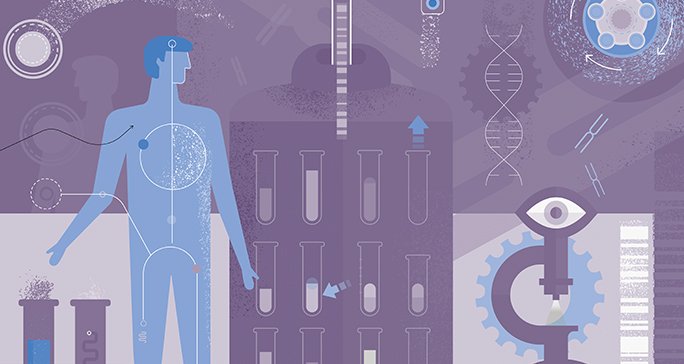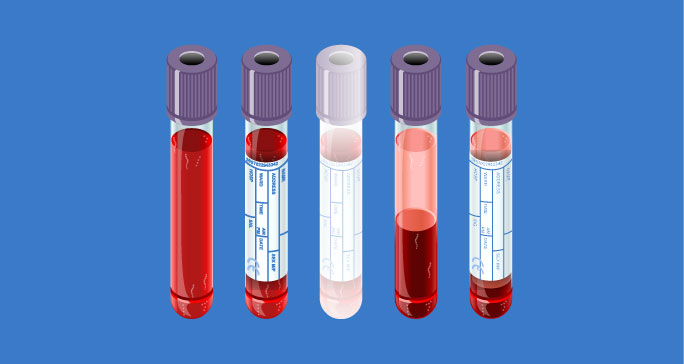- Diseases
- Acoustic Neuroma (14)
- Adrenal Gland Tumor (24)
- Anal Cancer (68)
- Anemia (2)
- Appendix Cancer (16)
- Bile Duct Cancer (26)
- Bladder Cancer (72)
- Brain Metastases (28)
- Brain Tumor (232)
- Breast Cancer (714)
- Breast Implant-Associated Anaplastic Large Cell Lymphoma (2)
- Cancer of Unknown Primary (4)
- Carcinoid Tumor (8)
- Cervical Cancer (158)
- Colon Cancer (166)
- Colorectal Cancer (116)
- Endocrine Tumor (4)
- Esophageal Cancer (44)
- Eye Cancer (36)
- Fallopian Tube Cancer (8)
- Germ Cell Tumor (4)
- Gestational Trophoblastic Disease (2)
- Head and Neck Cancer (12)
- Kidney Cancer (128)
- Leukemia (342)
- Liver Cancer (50)
- Lung Cancer (286)
- Lymphoma (278)
- Mesothelioma (14)
- Metastasis (30)
- Multiple Myeloma (100)
- Myelodysplastic Syndrome (60)
- Myeloproliferative Neoplasm (6)
- Neuroendocrine Tumors (16)
- Oral Cancer (100)
- Ovarian Cancer (172)
- Pancreatic Cancer (160)
- Parathyroid Disease (2)
- Penile Cancer (14)
- Pituitary Tumor (6)
- Prostate Cancer (146)
- Rectal Cancer (58)
- Renal Medullary Carcinoma (6)
- Salivary Gland Cancer (14)
- Sarcoma (238)
- Skin Cancer (296)
- Skull Base Tumors (56)
- Spinal Tumor (12)
- Stomach Cancer (64)
- Testicular Cancer (28)
- Throat Cancer (92)
- Thymoma (6)
- Thyroid Cancer (96)
- Tonsil Cancer (30)
- Uterine Cancer (80)
- Vaginal Cancer (16)
- Vulvar Cancer (20)
- Cancer Topic
- Adolescent and Young Adult Cancer Issues (20)
- Advance Care Planning (10)
- Biostatistics (2)
- Blood Donation (18)
- Bone Health (8)
- COVID-19 (362)
- Cancer Recurrence (120)
- Childhood Cancer Issues (120)
- Clinical Trials (630)
- Complementary Integrative Medicine (22)
- Cytogenetics (2)
- DNA Methylation (4)
- Diagnosis (232)
- Epigenetics (6)
- Fertility (62)
- Follow-up Guidelines (2)
- Health Disparities (14)
- Hereditary Cancer Syndromes (126)
- Immunology (18)
- Li-Fraumeni Syndrome (8)
- Mental Health (116)
- Molecular Diagnostics (8)
- Pain Management (62)
- Palliative Care (8)
- Pathology (10)
- Physical Therapy (18)
- Pregnancy (18)
- Prevention (916)
- Research (392)
- Second Opinion (74)
- Sexuality (16)
- Side Effects (604)
- Sleep Disorders (10)
- Stem Cell Transplantation Cellular Therapy (216)
- Support (402)
- Survivorship (320)
- Symptoms (182)
- Treatment (1786)
Second-generation inhibitors may change prognosis for patients with FLT3-positive acute myeloid leukemia
BY Devon Carter
6 minute read | Published December 07, 2021
Medically Reviewed | Last reviewed by an MD Anderson Cancer Center medical professional on December 07, 2021
The FLT3 gene helps stem cells mature to red blood cells, white blood cells and platelets in a process known as differentiation. The gene also helps control the number of cells produced.
But if development of the stem cells stops, the gene can mutate. “A large number of these poorly differentiated cells can transition into acute leukemia,” says Naval Daver, M.D.
30% to 35% of patients with acute myeloid leukemia (AML) carry the FLT3 gene mutation. Although it’s the most common mutation linked to AML, it’s also more difficult to treat.
“Patients with the FLT3 mutation typically respond well to initial therapy, but they relapse quickly and have poorer survival,” Daver says. Since it was first identified almost 20 years ago, the mutation has been a marker of high-risk disease that’s more likely to relapse.
FLT3-positive AML more common in younger patients
About 60% of patients with acute myeloid leukemia are over age 65. But when this type of leukemia occurs in a younger population, FLT3 mutation rates trend higher.
“Interestingly, the FLT3 mutation is found in almost 40% of younger patients with newly diagnosed AML, but it’s only seen in about 15% to 18% of patients older than age 65 with a new AML diagnosis,” Daver says.
AML is also an aggressive disease, but the FLT3 mutation amplifies that further. “Patients with the FLT3 mutation often have a very high white blood cell count, organ infiltration, liver enzyme abnormalities and a very high number of poorly differentiated cells in the bone marrow,” Daver says. “This is one of the most emergent diagnoses in leukemia.”
Testing for FLT3 gene mutation
The FLT3 mutation is usually diagnosed in one of two ways. One method is through next-generation sequencing, which identifies abnormalities in DNA. “At MD Anderson, we look at 81 genes of interest that are most commonly seen in AML,” Daver says. Results are available within four to six days.
In some cases, polymerase chain reaction (PCR) is also used. This offers a faster method of identifying the mutation, which is important because FLT3-positive AML is so aggressive.
“We can do a PCR test specifically for the known breakpoints in the FLT3 mutation,” Daver says. “And the advantage is we have important prognostic information within 24 to 48 hours to help make decisions on treatment.”
FLT3 mutation can be gained and lost
The FLT3 mutation isn’t hereditary. It’s also not considered a founder mutation in AML, like NPM1, IDH and IDH2. “Founder mutations fuel early development of AML, and then a mutation such as FLT3 is a second hit or driver mutations that pushes the cells into overdrive,” Daver says.
The mutation is also dynamic in that it can be gained or lost. Daver says about 20% to 25% of patients with the mutation go into remission after initial therapy, but the mutation isn’t detectable at relapse. About 15% to 20% of patients who don’t have the mutation at initial diagnosis go on to see it at relapse.
“That’s clinically important in terms of treatment with FLT3 inhibitors,” Daver says. “We always check for the mutation at each relapse because it may have emerged or grown to the point that it can be targetable when it wasn’t before.”
Second-generation FLT3 inhibitors plus cladribine improve response in younger patients
Historically, patients with newly diagnosed FLT3-positive AML were treated with an intensive chemotherapy regimen of anthracycline and cytarabine. It’s commonly referred to as 7+3 due to the dosage schedule. After a clinical trial showed the FLT3 inhibitor midostaurin improved survival, it was added to the standard treatment approach.
Researchers at MD Anderson are exploring second-generation FLT3 inhibitors, such as gilteritinib and quizartinib, as part of initial treatment. “Both in the lab and in the clinic, the second-generation FLT3 inhibitors have been found to be much more powerful,” Daver says.
They’re also investigating whether it’s possible to improve the backbone of 7+3 by increasing the dose of cytarabine or by adding a third drug, cladribine. “Both of these interventions independently have shown to improve response rates and survival,” Daver says. He cites that the addition of cladribine to 7+3 led to higher response rates and more durable responses, especially as initial therapy in patients with FLT3-mutated AML.
The next goal is to extend the length of remission, which can be monitored through molecular testing, and eventually get more patients who are eligible to receive a stem cell transplant in a deep remission. With this approach, Daver says he is now seeing the five-year survival rate close to 60% to 65%. This is similar to patients who don’t carry the FLT3 mutation.
“We’re finding the FLT3 mutation may no longer have a negative prognostic impact because of the better second-generation inhibitors, the addition of cladribine and higher-dose cytarabine and stem cell transplants,” Daver says.
Treating older patients with FLT3-positive AML
Older patients with a more complex medical history are often not well-suited for intensive chemotherapy. In 2020, research led by Courtney DiNardo, M.D., established azacitidine and venetoclax as standard treatment for older patients who aren’t good candidates for intensive chemotherapy. However, patients who carry the FLT3 mutation have had a remission rate of 65%, with survival extending only 11 and a half months. “We want better for these patients, so we decided to evaluate adding second-generation FLT3 inhibitors to the venetoclax backbones,” Daver says.
At the 2021 Annual Meeting of the American Society of Hematology (ASH), Daver will be presenting data on a combination of venetoclax and gilteritinib in patients with FLT3-positive AML who’ve relapsed or not responded to prior AML therapies (Abstract 691). “We’re seeing a response rate of almost 75% to 80% in patients who’ve had two or three relapses to prior AML therapy,” Daver says. The current standard treatment is gilteritinib alone, which has a remission rate of 45%. “We’re almost doubling that with this combination, and we’re able to deliver it safely,” Daver says. The combination is also resulting in a high rate of molecular clearance, meaning the mutation itself isn’t detectable after treatment.
More gilteritinib combinations for FLT3-positive AML could lead to chemotherapy-free regimens
The success seen with venetoclax plus gilteritinib prompted studies for two other combinations now moved to initial therapy for older patients with FLT3-positive AML. Early results are being presented as the 2021 ASH meeting. Nicholas Short, M.D., will be presenting data on the combination of azacitidine, venetoclax and gilteritinib (Abstract 696), and Musa Yilmaz, M.D., will be presenting data on decitabine, venetoclax and quizartinib (Abstract 370).
“The numbers in the studies are small, and it’s still early, but we’re seeing very powerful and deep responses in the frontline setting with the triplet combinations,” Daver says. So far, these studies are suggesting about 70% of patients achieve a true complete remission, meaning a full cell count recovery. The true remissions rate with azacitidine and venetoclax has been close to 40%.
“It’s exciting because we’re almost doubling true complete remission, which has historically tracked very closely to overall survival,” Daver says.
If the success continues, Daver hopes these triplet regimens for FLT3-positive AML may allow some patients the opportunity to avoid intensive chemotherapy while still having good outcomes: “That’s the vision, if we continue to see this initial effective activity maintained over time.”
Request an appointment at MD Anderson online or by calling 1-855-795-4300.

We’re finding the FLT3 mutation may no longer have a negative prognostic impact.
Naval Daver, M.D.
Physician & Researcher





